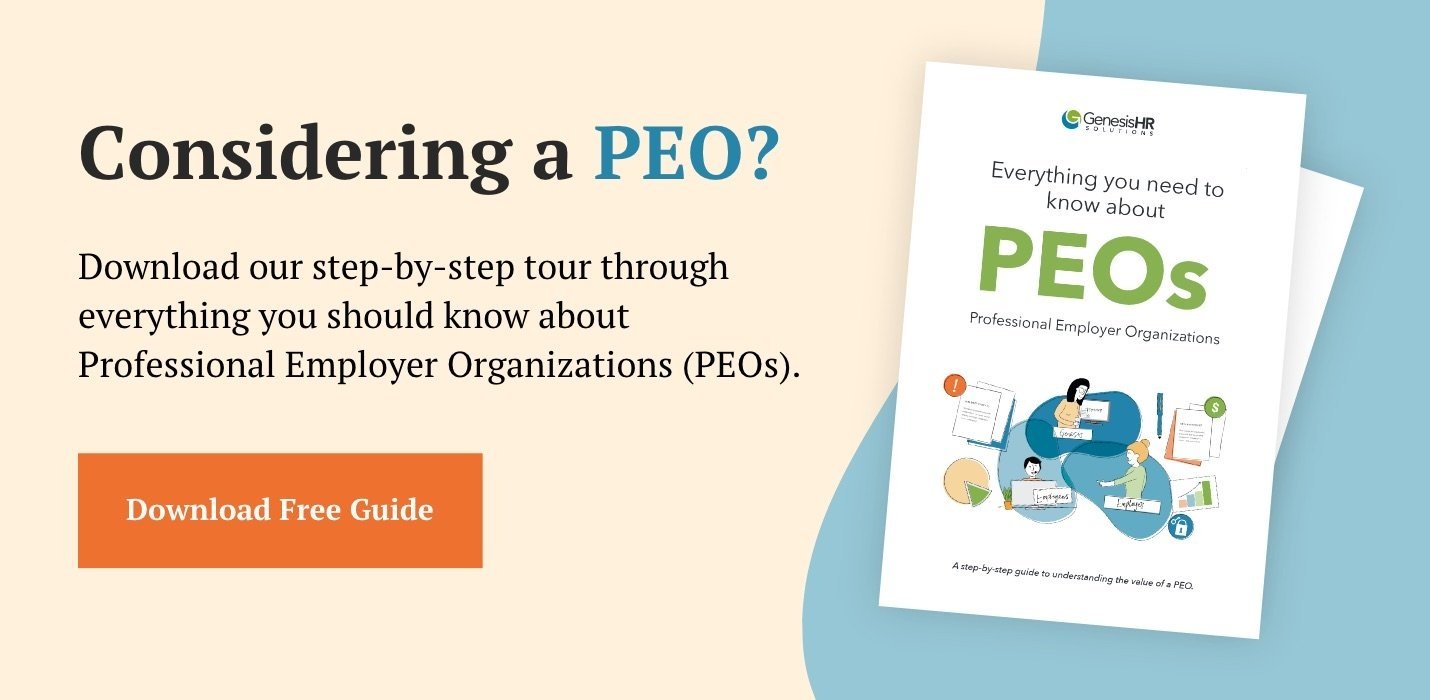Anyone who’s ever run payroll knows that it is a detail-oriented, sometimes arduous process. And for business owners and other company leaders who are tasked with the job, it can be overwhelming. Are you doing everything right? Are you missing any important steps or accidentally omitting details?
Anyone who’s ever run payroll knows that it is a detail-oriented, sometimes arduous process. We've created this checklist to help you be more confident with your payroll processing. Click To TweetTo help you be more confident with your payroll processing, we’ve created this payroll processing checklist. Keep in mind, however, that this is just a template—depending on your company, processes, or the state you do business in, you may have additional items to consider when it comes time to pay your employees.
Payroll Processing Checklist: A Template
1. Review any changes to your employees.
- Employee address changes. Whenever someone moves to a different state or locality, it potentially impacts their taxes.
- New hires. Have new hires completed all their onboarding paperwork? This may include the I-9 form proving they are authorized to work; signing any internal policies or handbooks; and completing tax forms.
- Terminations. If an employee has been terminated, does this person have accrued unused vacation or paid time off (PTO)? If so, should it be paid out? (Many states consider accrued, unused Vacation (or PTO) to be earned compensation, which is required to be paid out.)
- Status changes. Did any employees transfer to a new job? Do any employees have new benefits or a different rate of pay? Are anyone’s scheduled hours changing?
- Rate changes. Do any employees have rate changes, including pay increases, or are they due retroactive pay for prior pay periods?
Challenged by payroll and other complexities of being an employer? Here’s how a PEO like Genesis can help.
2. Complete, approve, and submit timecards or timesheets.
Review your employees’ hours for accuracy and reasonableness. Some questions to consider include the following: What’s your established pay period—weekly, bi-weekly, semi-monthly? (Keep in mind that states often have requirements for the timing of the pay date after the end of the pay period.) Are your employees hourly or salaried? Do your employees qualify for overtime?
The key here is to make sure you’re doing three things with your timesheets:
- Make sure they’re accurate.
- Make sure they’re approved.
- Make sure they’re submitted.
Another important aspect of this item on the payroll processing checklist is to make sure you’re keeping clear and complete records. There are a lot of ways to track records that show hours worked, and you should maintain these records carefully. If an employee questions your recordkeeping, or makes a complaint against your business, you want to make sure you have kept good records. As an employer, your documentation protects you—employers have the burden of proof.
3. Enter and review any additional payments needed.
A lot more than hours worked goes into payroll. Anything that’s different from the norm should be checked and double-checked, and you should also make sure you have backup documentation supporting what you need. Additional types of payments may include the following:
- Retro pay
- Bonuses
- Commissions
4. Review taxes and deductions.
Once you’ve calculated payroll, move on to taxes and deductions. Review your taxes and deductions for reasonableness and accuracy—for example, if your employee is living in Massachusetts, make sure they’re not being taxed in California.
Processing payroll doesn’t have to be complicated or expensive.
Learn more: Download The Small Business Guide To Payroll
5. Before you print checks, do a final review of all changes.
Once you’ve checked (again!) to ensure everything is correct, you are ready to print your payroll checks or process direct deposits. If you are printing live checks, be sure you have positive pay information if required by your bank.
6. Make sure everyone who needs payroll information has it.
At the end of the payroll process, you’ll have department leaders, managers, vendors, and others who rely on the data you just compiled. Once you’ve done a final review of the completed payroll, you want to make sure appropriate people get the information they need. Payroll is often the largest budget item for your company, and it’s important you’re following through and providing reports key stakeholders need. Making tax payments according to the required payment schedule is vitally important once payroll has been completed.
Pro Tips
Establish checkpoints throughout the payroll process to tie out wage and hours.
In payroll and accounting, being able to “tie out” as you go is very important. Have a process in place to ensure that balance sheet statements are correct, and everything matches throughout the entire process.
Make sure your specific payroll processing checklist doesn’t omit any important steps.
Depending on your company, this process can change drastically. Projects, splitting time across departments, and allocating time for employees with multiple jobs within a company can all affect how you process payroll.
You should also keep your company’s payroll records according to FLSA regulations.
The length of time you should keep these documents varies anywhere from three to seven years, and employment records could be even longer depending on which types you have.
Consider partnering with payroll processing experts.
If you’re feeling queasy after reading through these steps, we’ve got you covered. There’s a lot to consider and review when it comes to payroll processing, and you don’t have to do it alone.
At Genesis, we can partner with you to ease the burden of payroll processing. You track the hours and we’ll do the rest—from payroll processing to tax filing to benefits administration. Once compiled, we can set up your company payroll to allocate across departments, for example, or, if one of your employees is working in a different state, we can allocate time across work locations.
Want to learn more about how to eliminate the pain of payroll processing from your to-do list? Set up a discovery call today. We’d love to help take care of the payroll details and let you get back to running your business.




